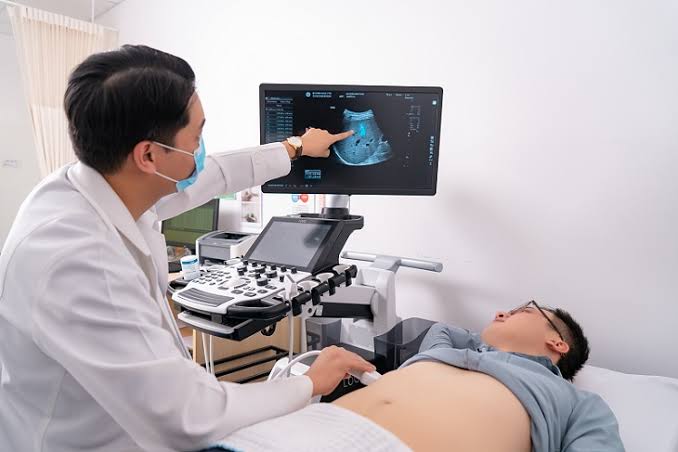
Classification of Acute Respiratory Distress Syndrome (ARDS)
1. Staging of ARDS
Acute respiratory distress syndrome (ARDS) can be classified into three stages based on the severity of the condition, which is primarily determined by the degree of hypoxemia (low blood oxygen levels):
- Mild ARDS: This stage is characterized by a partial pressure of arterial oxygen to fraction of inspired oxygen ratio (PaO2/FiO2) greater than 200 mmHg but less than or equal to 300 mmHg. Patients may experience some difficulty breathing and require supplemental oxygen.
- Moderate ARDS: In this stage, the PaO2/FiO2 ratio falls between 100 mmHg and 200 mmHg. Patients typically exhibit more pronounced respiratory distress and may require mechanical ventilation to maintain adequate oxygenation.
- Severe ARDS: This is the most critical stage, where the PaO2/FiO2 ratio is less than or equal to 100 mmHg. Patients in this category often require aggressive ventilatory support and are at a higher risk for complications and mortality.
2. Pathophysiological Classification
Another way to classify ARDS involves understanding its underlying causes, which can be categorized into pulmonary and extrapulmonary factors:
- Pulmonary ARDS: This type arises from direct lung injury due to conditions such as pneumonia, aspiration of gastric contents, toxic inhalation, or pulmonary contusion. The inflammatory response leads to damage in the alveolar-capillary membrane, resulting in pulmonary edema.
- Extrapulmonary ARDS: This type occurs due to indirect lung injury stemming from systemic processes such as sepsis, trauma, pancreatitis, or transfusion-related acute lung injury (TRALI). In these cases, inflammatory mediators released from distant sites affect lung function.
3. Clinical Presentation Classification
Clinically, ARDS can also be classified based on symptom onset:
- Acute Onset: Symptoms develop within hours to days following an inciting event. This rapid progression is typical for most cases of ARDS.
- Subacute Onset: In some instances, symptoms may develop more gradually over several days after an initial insult but still within one week.
4. Berlin Definition Criteria
The Berlin definition provides a standardized approach for diagnosing ARDS based on specific criteria that include timing of symptom onset, chest imaging findings (bilateral opacities), exclusion of cardiac failure or fluid overload as a cause for respiratory failure, and assessment of oxygenation levels.
In summary, acute respiratory distress syndrome can be classified based on severity (mild, moderate, severe), underlying causes (pulmonary vs. extrapulmonary), clinical presentation (acute vs. subacute onset), and diagnostic criteria established by the Berlin definition.
Signs and Symptoms of Acute Respiratory Distress Syndrome (ARDS)
Acute Respiratory Distress Syndrome (ARDS) is a serious condition characterized by rapid onset of widespread inflammation in the lungs. The signs and symptoms can vary based on the severity of the syndrome and the underlying cause, but they typically manifest as follows:
1. Difficulty Breathing
The most prominent symptom of ARDS is difficulty breathing, which may present as shortness of breath. This symptom often develops rapidly, within hours to days after the triggering event.
2. Rapid Breathing
Individuals with ARDS may exhibit fast breathing or take many rapid, shallow breaths. This is a compensatory mechanism as the body attempts to increase oxygen intake due to low oxygen levels in the blood.
3. Fast Heart Rate
A fast heart rate (tachycardia) can occur as the body responds to hypoxia (low oxygen levels), attempting to circulate blood more efficiently to deliver oxygen to vital organs.
4. Coughing
Coughing that produces phlegm may be present, indicating fluid accumulation in the lungs or an underlying infection contributing to ARDS.
5. Cyanosis
A bluish tint to the skin, particularly around the lips and fingernails (cyanosis), can indicate severe oxygen deprivation and is a critical warning sign requiring immediate medical attention.
6. Extreme Tiredness
Patients may experience extreme fatigue or weakness due to insufficient oxygen supply affecting overall energy levels and organ function.
7. Fever
Fever may accompany ARDS, especially if it is triggered by an infection such as pneumonia or sepsis.
8. Crackling Sounds in Lungs
Healthcare providers may detect crackling sounds (rales) during auscultation of the lungs, which can indicate fluid buildup in the alveoli.
9. Chest Pain
Chest pain, particularly when taking deep breaths, can occur due to lung inflammation or injury associated with ARDS.
10. Low Blood Pressure
Hypotension (low blood pressure) can develop as a result of severe illness and inadequate blood flow due to respiratory failure.
11. Confusion
Confusion or altered mental status may arise from hypoxia affecting brain function, highlighting the urgency for medical intervention.
In summary, the signs and symptoms of ARDS include difficulty breathing, rapid breathing, fast heart rate, coughing producing phlegm, cyanosis, extreme tiredness, fever, crackling sounds in lungs, chest pain during deep breaths, low blood pressure, and confusion. These symptoms necessitate immediate medical attention if experienced outside a hospital setting.
Management of Acute Respiratory Distress Syndrome (ARDS)
Overview of ARDS Management
The management of Acute Respiratory Distress Syndrome (ARDS) focuses on improving oxygenation, treating the underlying cause, and preventing complications. Given the life-threatening nature of ARDS, prompt and effective treatment is crucial.
1. Oxygen Therapy
Oxygen therapy is the cornerstone of ARDS management. The primary goal is to increase blood oxygen levels. This can be achieved through various methods:
- Nasal Cannula or Face Mask: For mild cases, supplemental oxygen can be delivered via a nasal cannula or face mask.
- Mechanical Ventilation: In more severe cases, patients may require mechanical ventilation. This involves using a ventilator to assist or take over the breathing process, ensuring adequate oxygen delivery while reducing the work of breathing.
2. Noninvasive Ventilation
For patients who are not in severe respiratory distress but still require assistance, noninvasive ventilation methods such as Bilevel Positive Airway Pressure (BiPAP) or Continuous Positive Airway Pressure (CPAP) can be utilized. These devices help keep airways open and improve oxygenation without the need for intubation.
3. Pharmacological Interventions
Several medications may be administered to manage symptoms and treat underlying conditions:
- Antibiotics: If an infection is suspected or confirmed, antibiotics are critical in managing ARDS.
- Sedatives: These may be used to reduce anxiety and facilitate easier breathing during mechanical ventilation.
- Muscle Relaxants: These can help minimize coughing and reduce oxygen demand during ventilation.
- Blood Thinners: Medications like heparin may be prescribed to prevent blood clots, which are a risk in immobile patients.
4. Supportive Care
Supportive care is essential in managing ARDS:
- Fluid Management: Careful monitoring and management of fluid intake are necessary to avoid fluid overload in the lungs while ensuring adequate hydration.
- Nutritional Support: Patients on mechanical ventilation may require feeding tubes to ensure they receive adequate nutrition.
- Physical Therapy: Early mobilization and physical therapy can help maintain muscle strength and improve recovery outcomes.
5. Advanced Therapies
In cases where conventional treatments fail, advanced therapies might be considered:
- Extracorporeal Membrane Oxygenation (ECMO): This technique acts as an artificial lung for patients whose lungs cannot provide sufficient oxygenation despite other interventions.
6. Positioning Strategies
Lying facedown (prone positioning) has been shown to improve oxygenation in some patients with ARDS by redistributing blood flow within the lungs.
7. Monitoring and Follow-Up
Continuous monitoring of vital signs, blood gases, and overall clinical status is critical throughout treatment. Regular assessments help guide adjustments in therapy based on patient response.
Conclusion
The management of ARDS requires a multifaceted approach that includes oxygen therapy, pharmacological interventions, supportive care measures, advanced therapies when necessary, and vigilant monitoring to optimize patient outcomes.







